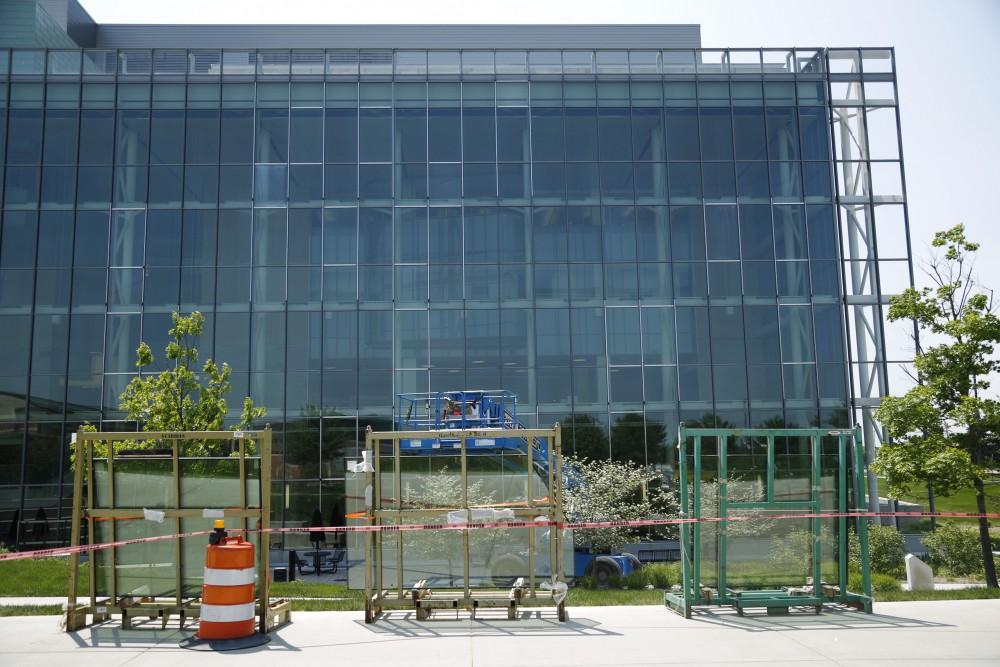Getting even greener

GVL/Lauren Loria Glass panels waiting to be installed at the Mary Idema Pew Library.
Jun 1, 2015
To continue to save energy and costs, Grand Valley State University’s 154,000 square foot Mary Idema Pew Library began an extensive window replacement project April 28.
James Moyer, associate vice president for facilities planning, said the project will take a total of six weeks to complete. Since its construction in 2013, energy consumption has been monitored and evaluated on the building.
During two consecutive winters, Moyer said GVSU had infrared photographs taken of the library as part of the university’s commissioning process. He said the photographs revealed places where the building’s seals were not performing as expected.
“Some of the remedial repairs were fairly straight forward; remove a ceiling tile and install additional insulation,” he said. “Others required more planning. This was the case with the replacement of non-performing window units.”
The Mary Idema Pew Library is GVSU’s 18th Leadership in Energy and Environmental Design (LEED) certified building. Additionally, in 2014 the building was awarded LEED-platinum, the highest of four levels, and it was the first library certified LEED-platinum in the state of Michigan.
“The university’s focus on energy consumption did not stop with the LEED plaque on the wall,” Moyer said. “Detailed mapping and sequencing plans were established along with off-hour heavy work schedules derived.”
Moyer said the glass installment will be completed by Architectural Glass and
“Given the fully occupied and completed nature of the library,” he said, “replacing the window units required a new level of ingenuity.”
To avoid damage, Moyer said Pioneer Construction worked with Thompson IG and Architectural Glass and Metals to plan the mobilization of materials. He said the plan devised the need for skilled “glazing crews” to disassemble and catalog all materials, and in return they would be placed back in the same order removed.
“This method of disassembly was critical as the framing assemblies were not of
Scott
The glazed units, he said, are the same makeup of the originals. However, energy is being saved by a series of coatings and high-performance films on the glass to maintain a high thermal R-value (a measure of the ability to resist heat flow).
“With those seals that broke we had holes in the building that needed to be replaced to get back to the original design intent,”
Moyer said the cost of the project is covered by warranty, with no charge to the university.






















